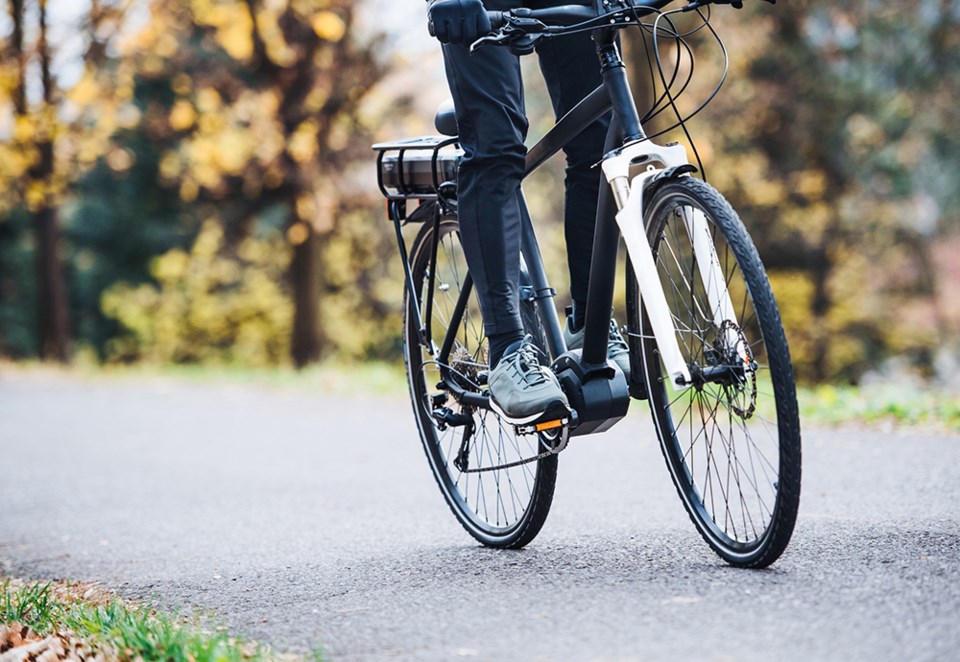City of Powell River Council has committed financially toward a grant funding application for a project in Townsite to enhance active transportation infrastructure.
At the October 6 city council meeting, councillors voted unanimously to apply for grant funding from the BC active transportation infrastructure grant program for the Maple and Sycamore safe streets project. Total cost for the project would be $510,000, with the city putting up $153,000 from a Powell River Community Forest grant, and an application for $357,000 under the infrastructure grant program.
At the October 4 committee of the whole meeting, councillors received a presentation from manager of planning services Daniella Fergusson, who outlined the proposed project for Maple Avenue and Sycamore Street.
Fergusson said the official community plan was updated in February of this year, which envisions an active transportation network across the community.
“It’s not just for people on bicycles, but anyone who is walking or rolling would be able to use these different types of pathways,” said Fergusson. “This grant application is focusing on a connection in Townsite, along Maple and Sycamore, and it would extend our currently funded mid-level connector route from the recreation complex to Brooks [Secondary School].
“This route on Maple would extend that bicycle route further so people could get from Townsite to Westview in a safe way.”
Fergusson said the plan would be for a traffic-calmed bicycle street, so it would not be a street with a separated bike lane, but more of a street where the traffic is slowed down. She said this is in response to community concerns about the speed of traffic on Maple.
“People would like to see 30 kilometres per hour and some physical infrastructure on the street to slow traffic down,” added Fergusson.
Staff worked with an engineering consultant, ISL Engineering, to develop a concept design and costing.
According to a report from Fergusson, key elements of the safe streets upgrade include: curb extension islands to narrow the roadway and reduce speeding; sidewalk curb ramps to improve accessibility; speed cushions near parks and schools to ensure low speeds; staggered sections of parking to reduce vehicle speeds.
“What we know from research is that 30 kilometre per hour signs do not slow down traffic,” said Fergusson. “The road needs to be narrower to do that.”
While the community building reserve fund has been identified as a funding source for the project, Fergusson said the city has also applied to Powell River Community Forest, and if that application is successful, the money would come from the community forest instead of the building reserve fund.
Fergusson said bikes would be travelling in traffic along the corridor, but 30 kilometres per hour is much safer than riding bicycles in zones where the speed limit is greater.
Mayor sees growth
Mayor Dave Formosa said bicycles are a mode of transportation that is growing immensely.
“I’ve always been able to support that,” said Formosa. “Plus, these bike lanes come with a tremendous amount of funding, over and above the city putting up all the money for road repairs.
“It’s a great investment and I know it saves lives or injury.”
Formosa said the Wildwood hill is treacherous and he was wondering why the city hadn’t zeroed in on that. He asked if it is because it is a provincial highway and the city doesn’t own it.
Fergusson said when the city was doing the bicycle network strategy planning and engagement process, the city heard the Wildwood bridge is one of the biggest pinch points for people walking and riding bikes. She said the hill itself, with the vehicle speeds, the corners and the grades, also feels unsafe.
“We want to see a separated bike lane that meets the province’s own active transportation design guidelines,” added Fergusson. “It’s their highway and they have guidelines they should be implementing on their own roads. Staff have been advocating for that and would love council’s support in advocating for that.”



